Teresa Champion (nee Martinez)
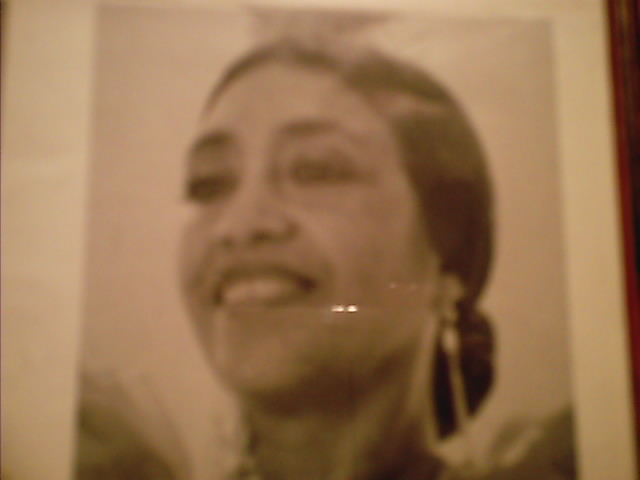

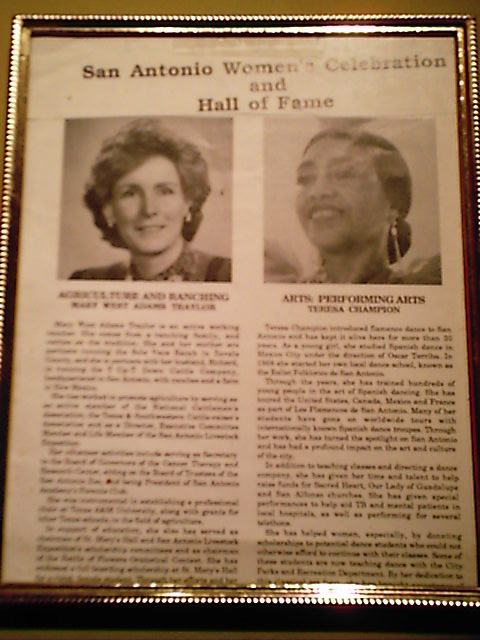
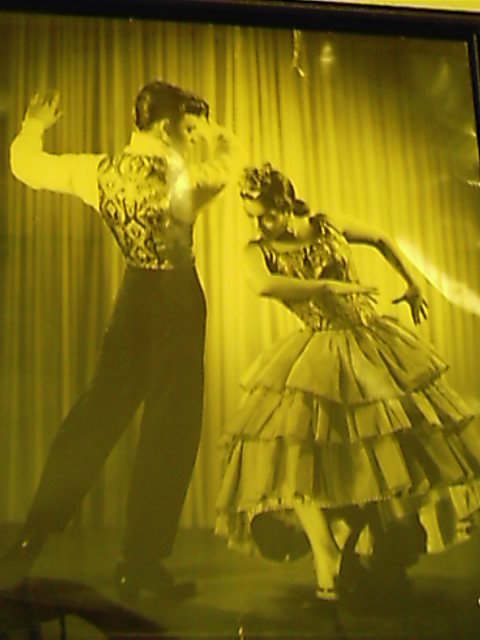
What did you and your friends want to be when you grew up?
I always wanted to be a dancer. I started dancing at the age of six. I was going to make my first communion I went to Barkley Elementry on the west side. The nuns would take us to church and the church we went to was right across from the school. Every time we would pass a building on our way to church I would hear like clicking. Then I stopped one day and looked to see what they were doing and they were dancing. Ever since then I wanted to be a dancer.
Was it easy for your family to provide dance lessons for you?
No. I learned everything from the sisters at my church. I would dance at the festivals that the church would hold. Then later on they told me if I wanted to get better that I would have to go to a school in Mexico. My mother told me it was too expensive, so my father decided to work three jobs. He saved three hundred dollars for me so I could go to Mexico.
Did you know any places or people in Mexico?
No. My mother and I were scared when we first went to Mexico. The closest that I had ever been to Mexico was Laredo before then. We didnít know anybody in Mexico, but because of the dance academy I would make new friends. Some people told me that they would treat me badly, because I was from America. But they didnít. They were nice.
Were you ever treated differently, because of being a dancer?
Yes in my time it was not like today where for some kids it was just a hobby. To me dancing was more of an art instead of like it is today. In my time dancing was something that you had to do. It was optional for a lot of the kids.
Was your family supportive of your career decisions?
Yes they were very supportive they sent me to Mexico. When I first went to Mexico that is when I first wanted to be a teacher. Then when I came back to San Antonio my mother helped me find a job.
What places did you travel to when ever you went to go dance?
I toured everywhere London, Paris, and all over America. We danced in Alabama during the hard times. It was during the bombings it was scary but it was a job.
When you went to Alabama were you scared?
Yeah, I was scared but it was a job. This is when they were bombing the schools. I was worried only because we would perform at some schools. They didnít bother us because we were in show business. I think it is because we were performers they treated us differently, so that was good. The people were very nice and we were all treated nice.
Would people treat you differently in San Antonio then out of San Antonio?
When we were out of town people treated us very nice. More than they did when we were in San Antonio.
Why?
Just because there were other dancers here in San Antonio that were jealous of us
Was the business led by men or women?
It was led by both men and women. Now a days it is hard to find a male dancer, only because children now a days have so many different things they can do. Like they have karate, soccer, and all sorts of things for kids to do.
What was the most difficult part of getting into your profession?
It really was not that difficult. To me the hardest part of trying to be a dancer was all the learning and schooling that I went through.
While you were working, did you see a difference in wages for women as compared to men?
Yes there was a difference in the wages that women got compared to men. You still see it today. The men get paid more to dance than women. The reason why they get paid more today is because there are less male dancers.
You have traveled around the world to dance. What was different in your travels? Do you think that you would have been able to travel without dancing?
I donít think I would have ever been all of the places that I have been if it was not for dancing.
Are there any regrets that you have about your career?
The only regret I have is stuff in school that I never got to do. Like, I have never been to a prom just different dances and stuff like that. I would have practices and I would go to the practices or shows or whatever. The reason for this is I always gave a hundred percent towards the art. I would skip my class to go to dance or be at a show or whatever there was for me to do.
What would you say are the major accomplishments of your career?
I think being in the movie The Alamo. They picked me. I didnít audition, but I went to the auditions. I didnít want to audition, because they had so many dancers all ready. So then, John Wayne came straight up to me an asked me- what do I do? I said I am a dancer. I am not going to audition and he asked why. I said because you already have enough dancers. Then he gave me a later day to go and audition. Then I got the part. I am the young lady then who dances on the table.
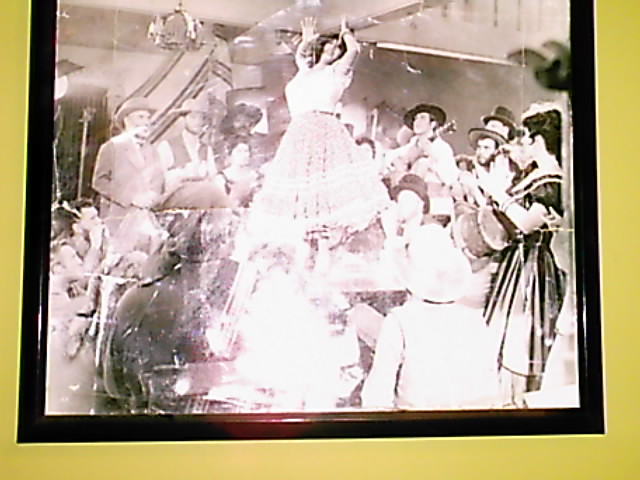
There are rights for women so that they can work. In my motherís time she could only be a housewife and thatís it. I do not remember any daycares or anything like that. Women are more, Ďmas libreasí now a days.
When did you first vote?
When I was 18.
When you had your first child did you continue as a housewife or pursue your career?
I actually did both. I was a dance teacher and a performer. Whenever I had to go out of town to perform my mother would take care of my children. I tried very hard to manage everything, but I was able to do it. I always put my children first before my career.
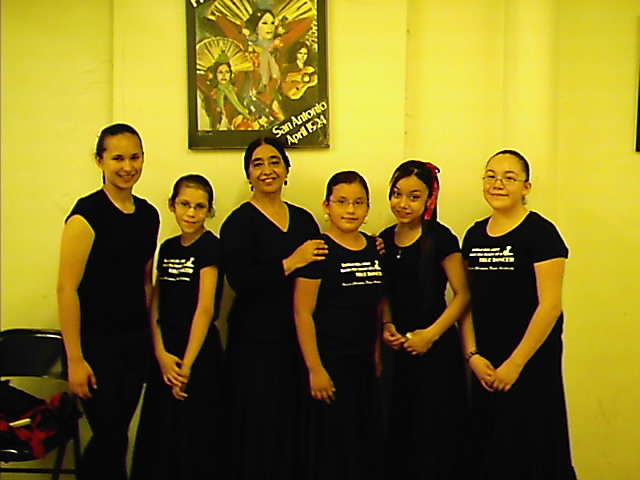
What I have learned from this interview was the dedication that Mrs. Champion has put into her dream. She reached her dreams with her family's support, and the discipline and standards that she set for herself. I also learned from this interview not to judge people by what is going on around them and assume what will take place. She told me that the people in Alabama treated her with respect for not only being a woman but a hispanic woman. This all took place during the race riots of the 1960's. This shows an example of how she was treated with respect because she was a performer. This is a prime example of how people today would treat a celebrity. I was also shocked to learn that she did not want to try out for a part in The Alamo, because she thought she wouldnít get the part. I was surprised, because I thought that a woman with all of her accomplishments would never lack selfconfidence. It shows that no matter who we are there is always the next challenge to overcome. One of the values that I have learned from Teresa Champion is the love of the arts. Her entire life has revolved around the performing arts. All of the members of her family make their living through the arts and generations are following in her footsteps. This is very unusual to see. Teresa also continues to share her joy of the arts through her teaching. I see it as a remarkable life to have all of your efforts revolve around doing what you love. To me, this was a very effective way to try and learn about the past. Sometimes historians can over analyze an entire period of the past. They can forget what the common person was going through and not hear an untold story. A valuable story that may lead us to understand the past and guide us with our future may be left untold unless we treasure the stories of each individual.
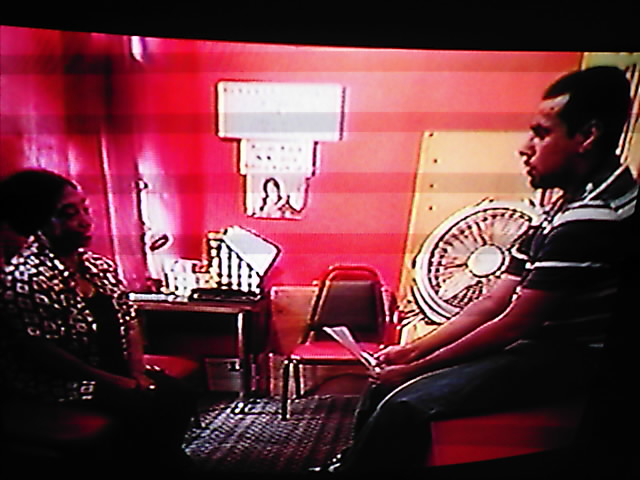
List a minimum of five sources. There must be links to each of the sources within the transcription.
Here is an example of an annotated source:
The Handbook of Texas Online
is a multidisciplinary encyclopedia of Texas history, geography, and culture sponsored by the
Texas State Historical Association and the General Libraries at UT-Austin. It was produced
in partnership with the College of Liberal Arts and the General Libraries at the University of
Texas at Austin. Copyright © The Texas State Historical Association. Last Updated: May 6, 2004.
San Antonio Womens Hall of Fame A Guide to the San Antonio Women's Celebration and Hall of Fame Records, 1984-2000, n.d. is available on-line at the UTSA Library On-Line Archives. The San Antonio Women's Celebration and Hall of Fame Records consist of administrative records, clippings, photographs, scrapbooks, printed materials, and a time capsule. The collection documents the everyday business of the organization from its inception in 1984 to 2000.
Texas House of Representatives Resolution No. 596 WHEREAS, On April 26, 1997, Teresa Champion will preside over San Antonio's annual Fiesta Night Parade as its grand marshal, and this recent honor provides a fitting opportunity to pay tribute to a truly legendary dancer and choreographer; and WHEREAS, A featured dancer in the classic John Wayne film The Alamo, Ms. Champion went on to have a tremendous impact in the art world both as a performer and as a tireless advocate; as the founder of Ballet Folklorico of San Antonio, she has introduced audiences far and wide to the beauty and power of Latin American dance, and she has been specifically honored for her work in the unique field of flamenco dance...